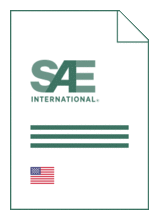
Standard [CURRENT]
SAE AIR 5744:2020-10-26
Aircraft Thermal Management System Engineering
- Publication date
- 2020-10-26
- Original language
- English
- Pages
- 11
- Publication date
- 2020-10-26
- Original language
- English
- Pages
- 11
Product information on this site:
Quick delivery via download or delivery service
Buy securely with a credit card or pay upon receipt of invoice
All transactions are encrypted
Short description
The intent of this report is to encourage that the thermal management system architecture be designed from a global platform perspective. Separate procurements for air vehicle, propulsion system, and avionics have contributed to the development of aircraft that are sub-optimized from a thermal management viewpoint. In order to maximize the capabilities of the aircraft for mission performance and desired growth capability, overall system efficiency and effectiveness should be considered. This document provides general information about aircraft Thermal Management System Engineering (TMSE). The document also discusses approaches to processes and methodologies for validation and verification of thermal management system engineering. Thermal integration between the air vehicle, propulsion system, and avionics can be particularly important from a thermal management standpoint. Due to these factors, this report is written to encourage the development of a more comprehensive system engineering approach to help eliminate and/or reduce mission limitations as a result of materials and components nearing temperature limits.
Loading recommended items...
Loading recommended items...
Loading recommended items...

